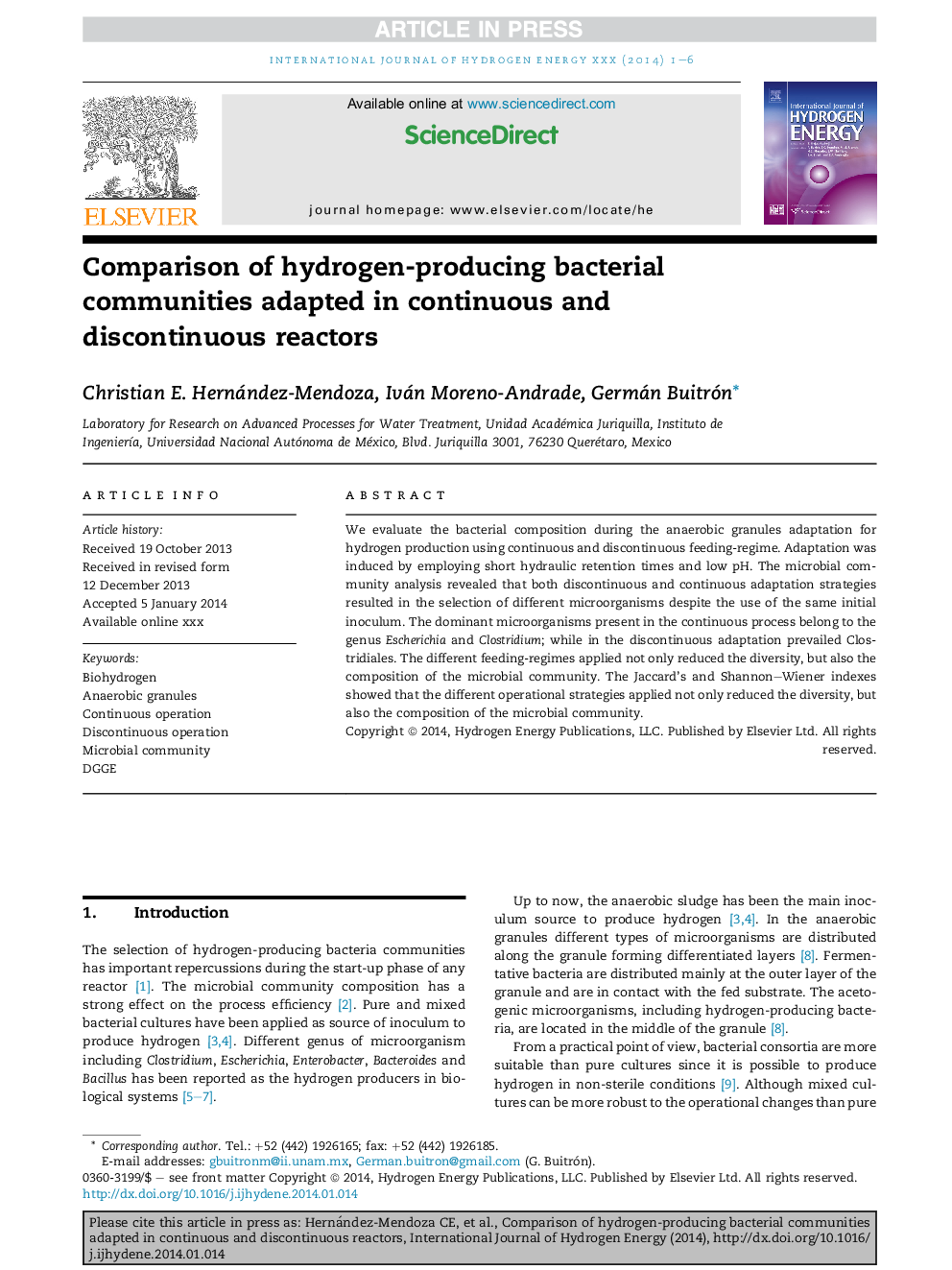| Article ID | Journal | Published Year | Pages | File Type |
|---|---|---|---|---|
| 7718328 | International Journal of Hydrogen Energy | 2014 | 6 Pages |
Abstract
We evaluate the bacterial composition during the anaerobic granules adaptation for hydrogen production using continuous and discontinuous feeding-regime. Adaptation was induced by employing short hydraulic retention times and low pH. The microbial community analysis revealed that both discontinuous and continuous adaptation strategies resulted in the selection of different microorganisms despite the use of the same initial inoculum. The dominant microorganisms present in the continuous process belong to the genus Escherichia and Clostridium; while in the discontinuous adaptation prevailed Clostridiales. The different feeding-regimes applied not only reduced the diversity, but also the composition of the microbial community. The Jaccard's and Shannon-Wiener indexes showed that the different operational strategies applied not only reduced the diversity, but also the composition of the microbial community.
Related Topics
Physical Sciences and Engineering
Chemistry
Electrochemistry
Authors
Christian E. Hernández-Mendoza, Iván Moreno-Andrade, Germán Buitrón,
